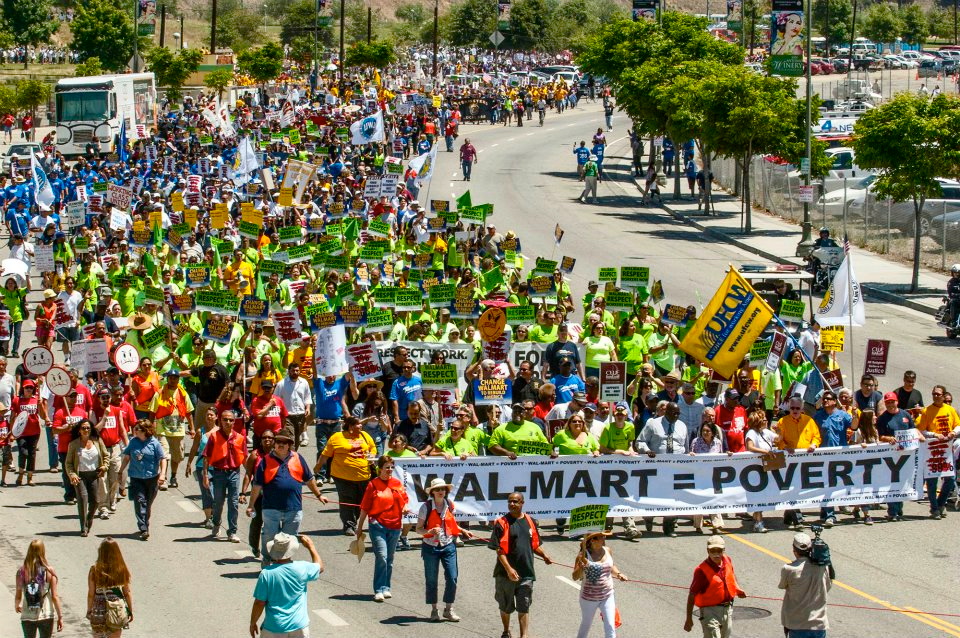The Los Angeles Times provides a colossally wrong picture of American workers.
Writing about union organizing among professional workers, a Los Angeles Times reporter last month provided the following, colossally wrong, picture of American workers:
Professionals account for 62 percent of the workforce, up from 15 percent in 1977.
It’s true that professional occupations have grown. Today, they are about 22 percent of the workforce (including part-time workers) and 24 percent of full-time workers—but not 62 percent.
If nearly two-thirds of all U.S. jobs were “professional”—with its connotations of well-paid autonomy at work, requiring high levels of education—the median annual salary of American workers would be in the $50,000 range instead of the $30,000 range. And that would mean income inequality would be dramatically reduced—from the top 10 percent getting half of all adjusted gross income in the country to their getting maybe only a quarter.
It would also be likely that two-thirds of the adult population would have bachelor’s degrees instead of less than a third now. And it would mean many more entry-level jobs would require a bachelor’s degrees. In fact, only 20 percent of jobs require it and, according to the Bureau of Labor Statistics, that isn’t going to change much in the next decade.
In other words, this report turns the American job structure upside down.
Misreporting like this occurs all the time in American newspapers. Economist Dean Baker is never at a loss for material. But there is often a pattern to these errors, one that reflects the limited worldview and social experience of reporters and the “upscale” audiences advertisers encourage them to address.
Though I have rarely seen numerical misreporting of this sort, most mainstream and elite discussion of “the knowledge economy,” its “knowledge workers,” and “the creative class” clearly assumes the above kind of disproportionate misunderstanding of the jobs most Americans actually do. Likewise, President Barack Obama’s insistence that everybody go to college so they can do “the jobs of the 21st century” must be based on a similar misunderstanding.
Misrepresentations of the U.S. workforce occur all the time in the media. But there is often a pattern to these errors that reflects the limited worldview of reporters and the “upscale” audiences advertisers encourage them to address.
The conspiracy-minded among us might make the case that our elite opinion-makers are deliberately lying to us in order to flood the labor market with college-educated workers who can then be paid less because their supply is so much greater than the demand for them. But the scope and scale of such a conspiracy makes this hypothesis highly unlikely.
My guess is that the spectacular magnitude of this particular reporting error reflects the increasingly extreme class segregation of American life—not only in residential life, as documented in Bill Bishop’s The Big Sort, but in social interaction and experience.
Besides, it is almost comforting to think that our ruling class and its elite professional middle-class opinion-makers actually know the truth and are hiding it from us—rather than to realize that the captains of the ship of state are navigating with a faulty map.
How could the “data-driven” best and brightest be so woefully misguided?
Imagine the children of two professional workers—a doctor and lawyer, for example, or a university professor and an accountant—who go to one of the many excellent public schools in the dozens of affluent (not rich, just comfortably middle class) suburbs around most American cities. Their highly dedicated parents schedule them for a wide variety of activities that cultivate social and cultural skills while insisting on their getting good grades in school.
These children, both the over-achievers and the just-plain-achievers, then go on to one of the better colleges, which are populated for the most part by the offspring of professional workers from affluent suburbs like theirs. Assuming they have done well in college, upon graduation these young people get entry-level professional jobs from which they launch careers that, like their parents, are both high stress and high reward. After some years enjoying life in the city, they marry, have children and move to a suburb with an excellent public school.
A caricature, perhaps, but by no means uncommon. Even adding some complexity, it will be very difficult for such people, particularly the high-achievers among them, to understand that America is mostly populated with people who are very unlike them.
Yes, there may have been working-class and even poor kids in their high school or at college, but they are a relatively small minority. Likewise, at work they are aware of clerical workers and maybe even the janitorial staff as they leave work in the evening, but that’s not where their focus is as they go about their daily work routine. At restaurants and in other leisure activities, they interact with non-professional workers, but they hardly notice the ones who are not directly serving them. Everything in their lives fosters the illusion that their lives are “typical” or “normal” and that poorly paid nonprofessional workers who get bossed around are a small and declining group.
These professionals may be conservative Republicans or progressive Democrats. They may be arrogant, self-absorbed, status-anxious climbers or large-spirited, generous and even nurturing leaders who do volunteer work among “the less fortunate.” But what is there in their lives—in their direct observation and experience—that would challenge the idea that we are a “knowledge economy” full of well-educated knowledge workers?
And if they were a reporter, a copy editor, or a well-educated reader of the daily press, what would make them slap their heads in disbelief at the idea that a substantial majority of American workers are “professionals” like them? Not much—and especially when our elite institutions of cultural production and reproduction (media, universities, politicians and their staffs) are peopled by folks with similar life trajectories who naturally recycle and affirm these notions.
If the captains ship of state are navigating with a terribly faulty map of who we are and what we do, only a large-scale and sustained mutiny can break through the professional bubble. Hopefully, the newly protesting Walmart workers and the spreading intermittent strikes of fast-food workers may be the beginnings of such a mutiny.
Jack Metzgar is a core member of the Chicago Center for Working-Class Studies.





0 Comments